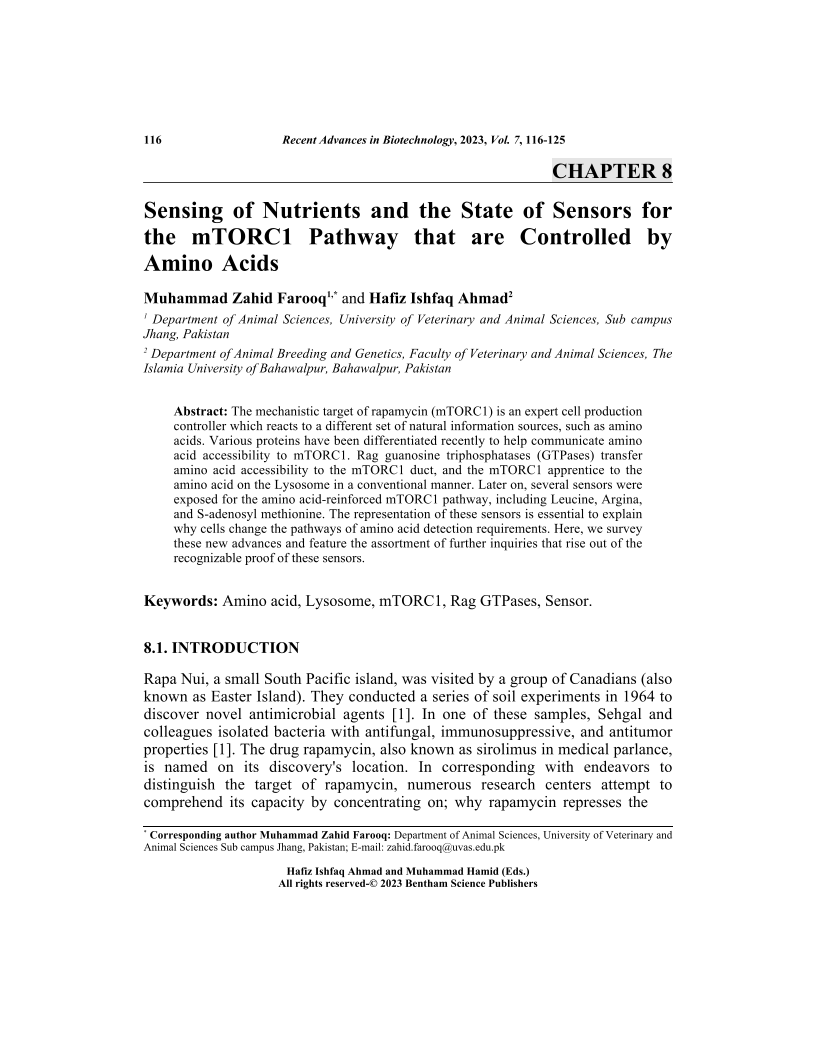Sensing of Nutrients and the State of Sensors for the mTORC1 Pathway that are Controlled by Amino Acids

- Authors: Muhammad Zahid Farooq1, Hafiz Ishfaq Ahmad2
-
View Affiliations Hide Affiliations1 Department of Animal Sciences, University of Veterinary and Animal Sciences, Sub campus Jhang, Pakistan 2 Department of Animal Breeding and Genetics, Faculty of Veterinary and Animal Sciences, The Islamia University of Bahawalpur, Bahawalpur, Pakistan
- Source: Recent Advances in Biotechnology , pp 116-125
- Publication Date: July 2023
- Language: English
Sensing of Nutrients and the State of Sensors for the mTORC1 Pathway that are Controlled by Amino Acids, Page 1 of 1
< Previous page | Next page > /docserver/preview/fulltext/9789815165074/chap8-1.gif
The mechanistic target of rapamycin (mTORC1) is an expert cell production controller which reacts to a different set of natural information sources, such as amino acids. Various proteins have been differentiated recently to help communicate amino acid accessibility to mTORC1. Rag guanosine triphosphatases (GTPases) transfer amino acid accessibility to the mTORC1 duct, and the mTORC1 apprentice to the amino acid on the Lysosome in a conventional manner. Later on, several sensors were exposed for the amino acid-reinforced mTORC1 pathway, including Leucine, Argina, and S-adenosyl methionine. The representation of these sensors is essential to explain why cells change the pathways of amino acid detection requirements. Here, we survey these new advances and feature the assortment of further inquiries that rise out of the recognizable proof of these sensors. nbsp;
-
From This Site
/content/books/9789815165074.chap8dcterms_subject,pub_keyword-contentType:Journal -contentType:Figure -contentType:Table -contentType:SupplementaryData105

